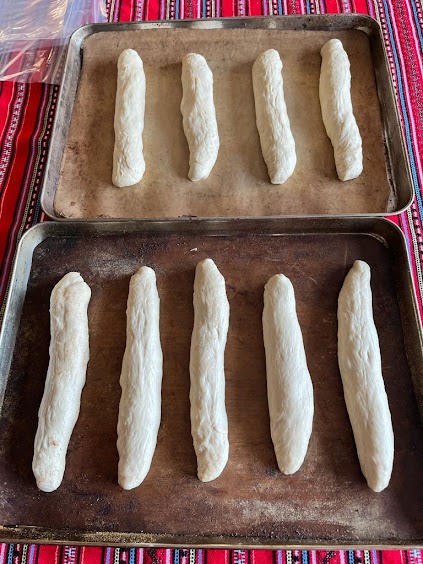Vienna Bread
Welcome to another step-by-step recipe from BreadClub20. Why not drop by our main Facebook page by clicking here.... If you like what you see and enjoy the recipe, we hope you go on to join us by 'Liking' and 'Subscribing'.
Vienna bread is more of a 'type' of bread than a specific bake. It's usually formulated from a selection of ingredients that can differ and be swapped about depending on the baker and their own baking repertoire.
Vienna bread started life, predictably, in Austria in the 19th century. It has been credited with being the inspiration for French baguettes and also Danish Viennese bread.
Prior to the 19th century, Austrian bread was baked using the 'old dough' method. Pieces of old dough would be used to start fermentation for the next batch of bakes. In the 19th century, bakers started using beer yeasts and 'new dough'. They lacked the sourness of the 'old dough' bakes and were popular at Court.
In 1846, amidst a shortage of beer yeast, brewers switched from top-fermenting yeasts (ales) to bottom-fermenting yeasts (lagers) and bakers were forced to develop the Vienna process, creating and using sweetened yeasts and very highly-milled flours.
Vienna bread owes much to the French brioche, and there are many formulae where eggs are an intrinsic part of the bake.
The key is in the flour.
Ideally, we're seeking out a fairly low-protein, low-extraction flour
In America, this is likely to be called an 'All-Purpose' flour.
In the United Kingdom, we usually use the term 'plain' flour for All-Purpose. However, in this case, plain flour would not be suitable as it is too low in protein and is best reserved for cakes and biscuits.
In Europe, the ideal flour would be a T55 (French) or Tipo 0 (Italian) or ciabatta flour.
Look for one with about 11% protein and has been highly milled to produce a soft and silky flour.
A word about the ingredients
1. You'll see I'm not using eggs. This is a deliberate decision to keep the bread as light in texture as possible.
2. I'm using powdered milk for the same reason. However, if you can't source powdered milk, use skimmed milk (not UHT) and replace the liquid with milk.
3. I'm using quite a bit of instant yeast. This is to ensure a good quick rise.
4. Proofing temperature. This needs to be a warm place. ideally somewhere between 23⁰C and 27⁰C.
5. Traditionally, Vienna bread is shaped like a short baguette (a baguette viennoise). The crumb is softer than that of a baguette and this makes it ideal for hot dogs, paninis, and filled rolls.
INGREDIENTS
500 gms flour (see above)
30 gms powdered milk (see above)
325 gms tepid water
10 gms crushed sea salt
25 gms caster sugar
45 gms unsalted butter at room temperature
12 gms rapid yeast
and for the glaze
A beaten egg with a pinch of salt added.
METHOD
1. Add all the ingredients into a bowl and begin to bring them together into a sticky dough.
2. Knead until the dough becomes silky and smooth.
3. Oil a bowl and place the dough into it. Cover and leave in a warm place (see above) until the dough has tripled.
5. Divide into 100 gm pieces and shape them into boules.
6. Cover and rest for 15 minutes.
7. Knock back (gently press) and then shape into tight 20 cm long oval (torpedo-shaped) Viennas.
8. Place on a baking tray, or trays, leaving plenty of space.
9. Cover and leave for an hour at room temperature until doubled in size.
11. Egg wash and score plentifully with horizontal lines across the width of the Vienna.
12. Bake for 15 minutes or until golden brown and hollow when tapped underneath.
13. Cool on a rack.
Vienna bread will keep fresh for about a day, but they do freeze well.
Happy baking....




.jpeg)






Comments
Post a Comment